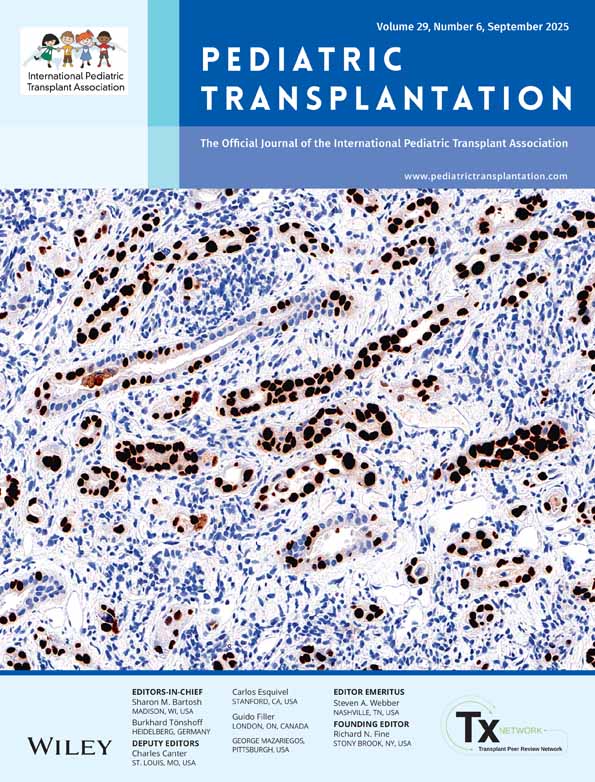Unusual evolution of an Epstein–Barrvirus-associated leiomyosarcoma occurring after liver transplantation
Abstract
Abstract: We report the case of a child who developed, 2 yr after orthotopic liver transplantation (OLTx) for biliary atresia, a multi-focal hepatic tumor with lymphonodular metastases, identified as an Epstein–Barr virus (EBV)-associated leiomyosarcoma. Chemotherapy was given without tumor response. Subsequently, slow growth of the tumor was observed. Immunosuppression was tapered and stopped 9 yr after transplantation. At the present time, 12 yr after the discovery of the first hepatic lesions, the patient is alive and completely symptom-free, the abdominal masses are stable, and liver function tests are completely normal. Smooth muscle tumors are increasingly recognized in children with various immunodeficiencies occurring after organ transplantation. This unusual evolution of a clinically aggressive tumor into a stable disease after restoration of immunity confirms that the immune status of the patient is a crucial factor.




